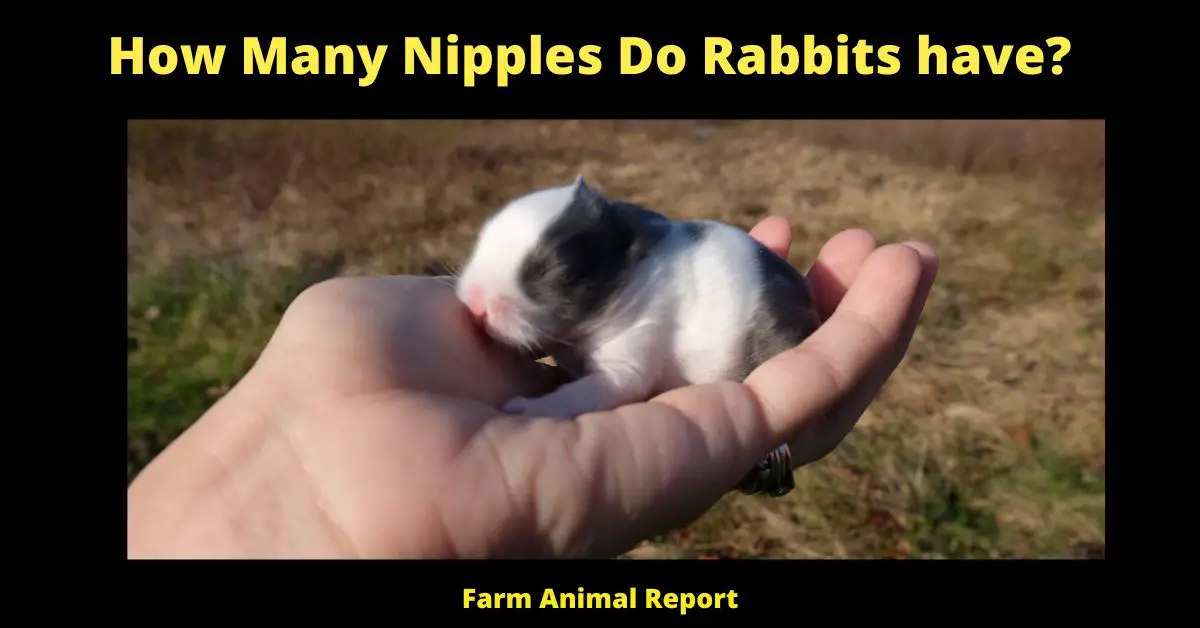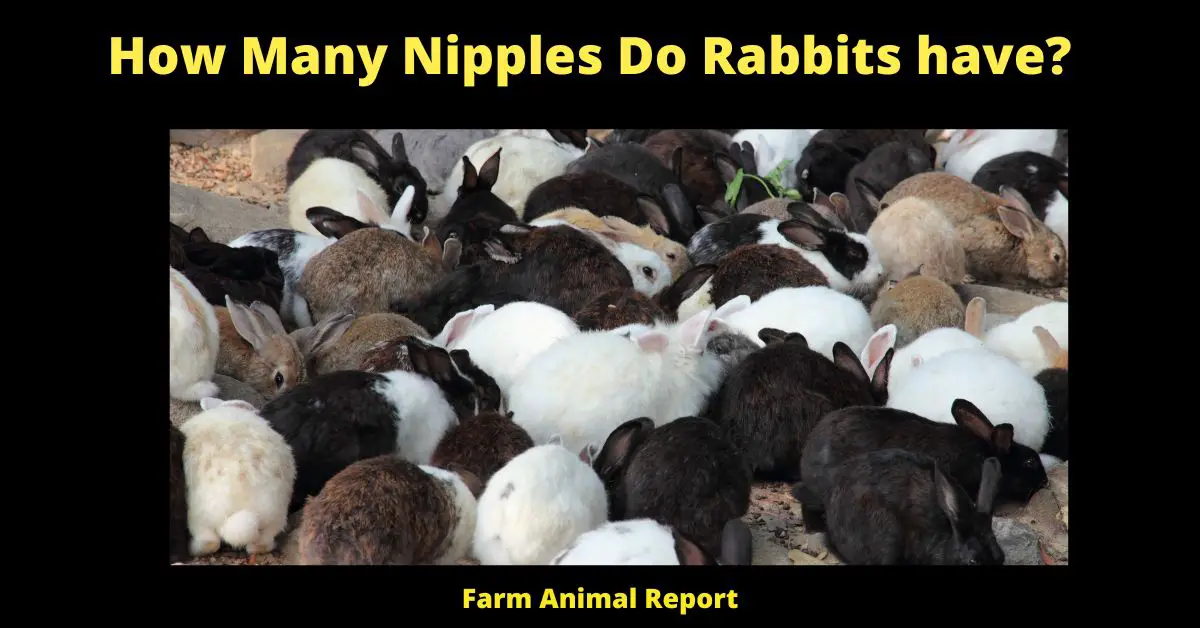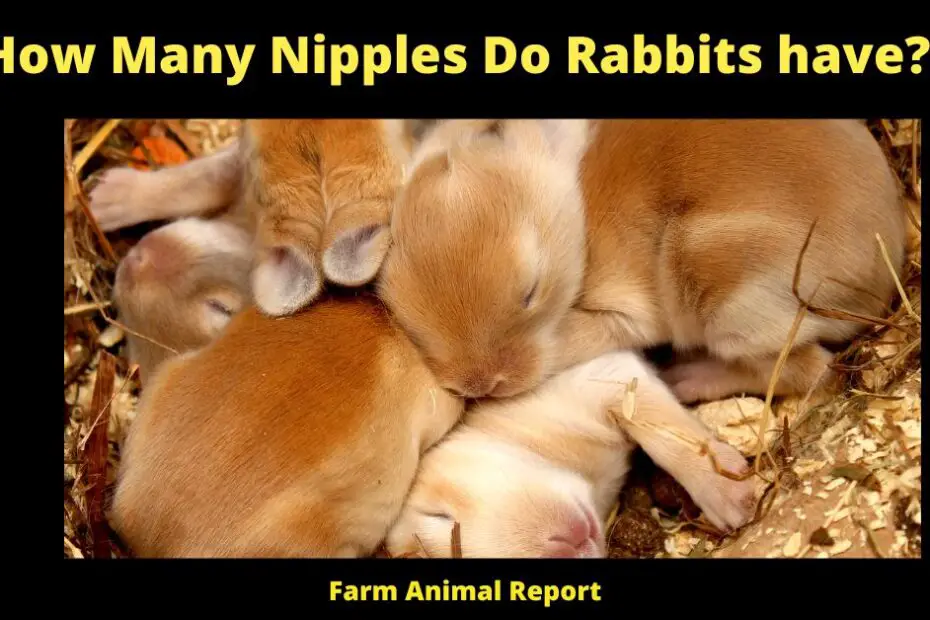Do Rabbits have Nipples – The nursing mother rabbit usually has between 8 and 10 nipples, but many give birth to 12 or more young.
Do Rabbits Have Nipples
There’s a lot of debate over how many nipples rabbits have. Some say they have six, while others claim they have eight. But what’s the truth? We did some digging and found the answer to this puzzling question!
What is the Average Number of Nipples that Rabbits Have?
The average number of nipples that rabbits have is 6, although there are some species that can have as many as 11. These extra nipples generally appear in pairs along the rabbit’s belly, just below the ribcage. How Many Nipples Do Rabbits have?
Check Out Amazon for Resources about Breeding Rabbits
They are small and pink, and they serve a similar function to nipples in other mammals: they secrete milk to nourish young rabbits after birth. It is believed that rabbits are able to grow this extra set of nipples because their ability to reproduce is so prolific; each pregnancy requires a large number of resources to support both mother and offspring, necessitating an increased food supply.
Despite their prevalence in most rabbit species, extra nipples do not seem to provide any real evolutionary advantage; any genes that would make them useful for survival are generally selected against during natural selection. Nevertheless, for the average rabbit owner, it is interesting to know how many nipples their furry companion has! How Many Nipples Do Rabbits have?

What do Rabbit Nipples look like?
Rabbit nipples are small, round structures that extend from the underside of rabbit bodies. They are typically located near the front legs, with some variation in position depending on the breed and size of the rabbit.
Although they superficially resemble breasts, they serve a unique purpose in the reproductive cycle of rabbits. Unlike other mammals, female rabbits do not have highly developed milk glands; instead, their nipples release a mild secretion known as “lacteal fluid.”
This wet secretion helps to keep female rabbits clean and hydrated during nursing periods. Additionally, it stimulates passive immunity in young rabbits and provides them with nutrients like calcium, protein, and vitamin B6.
Overall, rabbit nipples are key components for ensuring the well-being of newborn bunnies!
When do Female Rabbits Develop Nipples?
Female rabbits develop nipples after they reach sexual maturity, which usually occurs around 4-5 months of age. At this point, the rabbits will develop both regular and Auxiliary (or “false”) nipples.
Regular nipples are located along the rabbit’s belly, while Auxiliary nipples are found on the sides and back. While all-female rabbits have these extra nipples, not all of them will use them to nurse their young. Instead, the number of nipples a rabbit uses depends on how many offspring she is able to produce. For example, a doe with six regular nipples will likely only use two or three of them to feed her litter.
The rest of the litter will then rely on the Auxiliary nipples for sustenance. In some cases, however, a doe may have too few nipples to provide enough milk for her entire litter. If this happens, the kit with the lowest body weight may not survive.
What are the Functions of a Rabbit Nipples?
The primary function of rabbits’ nipples is to provide a source of nutrition for their offspring. Each nipple contains an intricate network of ducts that are highly specialized for the transportation and flow of milk, allowing it to be delivered evenly to every bunny in the litter.
Additionally, nipples help to generate heat. As breasts swell up while they are being stimulated, they tend to radiate residual body heat into the surrounding environment, which helps young kits stay warm as they nurse. Finally, rabbit nipples also serve as sensory organs that allow bunnies to detect where their mothers’ bodies are located.
This allows babies to position themselves correctly for nursing without having to move around and search for their mother’s teats. Ultimately, then, the true purpose of rabbit nipples is essential not only for the survival of individual animals but also for fostering healthy populations of this species.
Do Male Rabbits have Nipples?
There is a common misconception that male rabbits, or bucks, do not have nipples. This is not true, however; all rabbits, including males and females, are born with definite nipple structures.
These specialized structures are used for nursing young, even though bucks rarely produce milk. In fact, some scientists believe that the nipples in male rabbits may serve other purposes as well, such as regulating hormone levels and controlling body temperature.
Whatever the reason for their existence, it is clear that male rabbits have nipples just like female rabbits do. And in this sense at least, there is no distinction between the sexes when it comes to this particular aspect of rabbit anatomy.
Some Rabbits are Born without any Nipples at all
Some rabbits are born without any nipples at all. According to a study conducted by the University of California, Davis, approximately 1 in every 500 rabbits is born without nipples. This condition is called agalactia and it can be caused by a variety of factors, including genetic defects, hormonal imbalances, and exposure to toxins.
While rabbits with agalactia can still lead happy and healthy lives, they may have difficulty reproducing if they are unable to find a mate who also has the condition.
In addition, mothers who are unable to nurse their young may have difficulty bonding with them. As a result, agalactia can have a significant impact on a rabbit’s quality of life.

What is Agalactia in Mammals?
Agalactia is a medical condition that refers to the inability to produce milk. In mammals, this condition is most often seen in animals that have recently given birth.
Agalactia can be caused by various factors, including hormonal imbalances, interference with milk production, or infection. Treatment for agalactia typically involves addressing the underlying cause of the condition. In some cases, such as when an infection is present, medication may be necessary.
For animals that are unable to produce milk due to hormonal issues, supplementation with artificial milk may be recommended. Regardless of the cause, agalactia can be a serious condition that can jeopardize the health of both mother and child. Early diagnosis and treatment is essential for the best possible outcome.
How do Female rabbits make Milk?
Female rabbits make milk for their young immediately after they are born. A protein-rich fluid called colostrum is secreted from the mother’s mammary glands, and this provides the newborns with essential antibodies that help protect them from disease.
After about a week, the colostrum is replaced by true milk, which is high in fat and lactose. The milk production of a doe (female rabbit) will increase as her litter grows, peaking when the kits (baby rabbits) are around four weeks old.
At this point, the mother will be producing around 12 times more milk than she did at birth. Once the kits are weaned, the doe’s milk production will gradually decline.
What does Rabbit Milk Consist of?
According to recent research, rabbit milk is rich in a number of important nutrients, including protein, fats, vitamins, and minerals. In particular, it contains high levels of calcium and phosphorous, which are essential for healthy bone development in young animals.
In addition, rabbit milk also contains immunoglobulins that stimulate growth and help prevent infection. Overall, it is clear that rabbit milk is an extremely beneficial substance for both young rabbits and any humans who consume it.
Given its positive effects on growth and immune function, this unique milk has the potential to revolutionize healthcare in the future.
What organs are involved in a Rabbits Making Milk?
Female rabbits have two pairs of mammary glands, which are located along the length of their body. Each mammary gland is connected to a milk duct, which empties into the nipple. When a rabbit is nursing her young, her body produces a hormone called oxytocin, which signals the muscles around the milk ducts to contract and release milk.
The milk then flows through the ducts and out of the nipples, where it is consumed by the nursing kittens. In addition to the mammary glands and milk ducts, the rabbit’s reproductive organs are also involved in milk production.
The ovaries produce estrogen, which helps to stimulate milk production, while the placenta provides nutrients and hormones that are necessary for lactation.
What benefit do Baby Rabbits from drinking Milk from their Mother’s Nipples?
Baby rabbits get a range of important nutrients from nursing on their mother’s milk. This milk is rich in proteins, fats, vitamins, and minerals, all of which are essential for healthy development and growth. Additionally, nursing helps the baby rabbits to build up a strong immune system that will protect them against disease.
Finally, nursing helps the baby rabbits to develop strong social bonds with their mother, which will benefit them throughout their lives. As such, it is clear that the benefits of nursing for baby rabbits far outweigh any disadvantages. Indeed, without this valuable source of nourishment and comfort, many baby rabbits would not survive into adulthood.
When does a Baby Rabbit quit sucking on its mother’s nipple?
A baby rabbit will typically suck on its mother’s nipple for the first time within hours of being born. After that, the rabbit will return to the nipple every few minutes to feed. As the rabbit grows, it will begin to spend less time nursing and more time eating solid food.
By the time the rabbit is around eight weeks old, it will no longer need to be nurse at all. The exact timing will vary depending on the breed of the rabbit, but all rabbits will eventually wean themselves from their mothers.
Is it Possible to Bottle feed a Rabbit?
Rabbits are creatures of habit and routine. They like to know what to expect, and they do not respond well to change. For this reason, it is generally not recommended to bottle feed a rabbit. Baby rabbits need to be fed very frequently, and if they become accustomed to being bottle fed, they may become anxious and stressed when their regular feeding schedule is disrupted.
What’s more, bottle feeding requires a high level of care and attention, and it can be difficult to meet a rabbit’s needs if you are not experienced in caring for them. However, in some cases, such as when a mother rabbit dies or is unable to produce milk, it may be necessary to bottle feed a baby rabbit.
If you find yourself in this situation, be sure to consult with a veterinarian or experienced rabbit breeder for guidance on how to properly care for your new charge.
What Extra Nutrients do Female Doe Rabbits need while they are Nursing?
When female rabbits are nursing, they need a lot of extra nutrients in order to support their growing kits. This includes high levels of protein to promote milk production, as well as key vitamins and minerals that help to support their overall health.
Some of the specific nutrients that are most important for doe rabbits while they are nursing include vitamin A, which promotes healthy vision and cellular function in both mom and baby, B-complex vitamins for energy metabolism, and omega-3 fatty acids for immune system health.
Additionally, doe rabbits also need plenty of calcium to help with strong bone formation in their growing kits. By ensuring that your does get enough extra nutrients during pregnancy and nursing, you can help them to provide the best possible care for their young.
What is the Best Diet for Nursing Rabbits?
Although there are many opinions on the best diet for nursing rabbits, most experts agree that hay, pellets, and fresh vegetables should be included. Hay is an important source of fiber, which helps to keep the digestive tract healthy.
Pellets provide a balance of nutrients, and fresh vegetables offer vitamins and minerals. When choosing hay, look for a variety that is high in fiber and low in sugar. For pellets, choose a brand that is specifically designed for rabbits.
When it comes to vegetables, focus on dark, leafy greens. Nursing rabbits need extra calories to support milk production, so food should be available at all times. Water should also be available at all times. If you are unsure about what to feed your rabbit, talk to your veterinarian for advice.
Final Thoughts – How many Nipples Do Rabbits Have?
Female Rabbits have approximately 6-12 nipples, located on the underside of their body. Male rabbits also have nipples, but they are much less visible and are not typically used for feeding.
Baby rabbits will typically suck on their mother’s nipple for the first time within hours of being born. After that, the rabbit will return to the nipple every few minutes to feed. As the rabbit gets older, it will begin to nurse less frequently.





